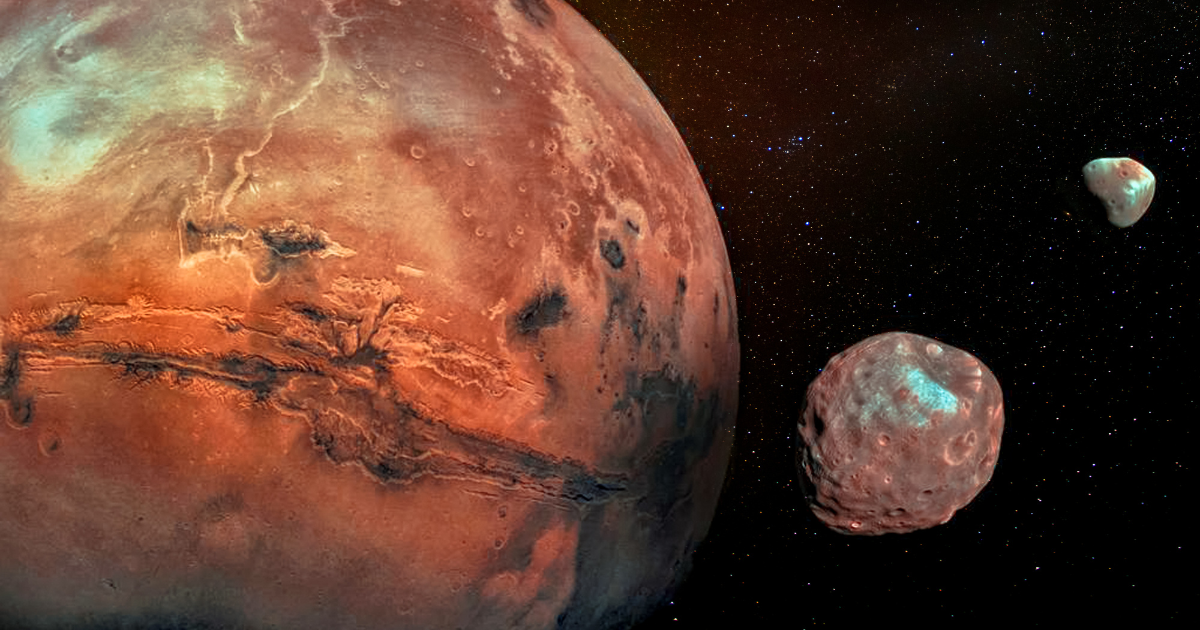
Mars is an interesting planet with many unexpected features. For one, it is not a sphere, but rather what is called a triaxial, which means its width, length, and height all have different measurements.
In addition, it has some of the most active volcanos in the solar system, some of the highest mountains and lowest caverns, and other oddities that make studying the planet very important.
According to a new paper that hasn’t yet been peer-reviewed, many of these weird features of Mars might have formed due to a moon that was about a third the size of Earth’s moon.
The problem, however, is that there is no moon like this around Mars.
The paper theorizes that after helping to form the planet, the moon somehow escaped the gravitational pull of Mars and traveled to unknown areas. It could have been pulled into the sun or possibly another planet, or simply escaped the solar system entirely and it is out there traveling through space.
In the research it is also proposed that another object could have smashed into this moon, resulting in it breaking apart and forming the two moons of Mars we see today, Phobos and Deimos.
Additional research on these moons would need to be done in order to confirm or rule this out.
While we don’t know what happened to this moon (if it existed) the paper does suggest that a large bulge on Mars that is near the equator could have been made thanks to this moon. The area, known as Tharsis, has three of the largest volcanoes in the solar system.
The paper’s author, Michael Efroimsky, a US Naval Observatory astronomer, calculated that this area, and the volcanos, would have formed if there were a moon as he described.
Fortunately, several missions to Mars and its moons are planned by various space agencies and private companies in the coming decades. Hopefully these missions will shed more light on the mysterious shape and landscape of the red planet.
How can a moon just disappear?
If you thought that was interesting, you might like to read about a second giant hole has opened up on the sun’s surface. Here’s what it means.